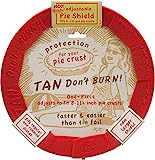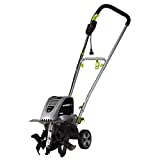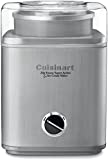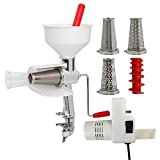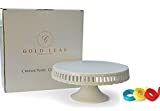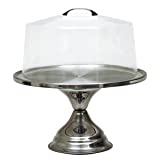All About The Peach Pit /Seed
What is the difference between a Freestone and a Clingstone Peach?
Is it true that the pit or seeds of a peach are poisonous?
*FTC Disclosure: As an Amazon Associate I earn from qualifying purchases with no extra cost to you
*FTC Disclosure: As an Amazon Associate I earn from qualifying purchases with no extra cost to you
Do peach seeds contain cyanide?
Can you grow a tree if you plant a peach pit?
What is the Difference between Freestone and Clingstone Peaches?
The large, hard pits (or seeds) of peaches are referred to as "stones".
Peaches, (and also plums and cherries) are known as "stone fruits."
Peaches are usually classified into two categories, depending on the ease of which the peach pit can be separated from the flesh--the freestones and the clingstones.
Freestones are the peaches for which the fruit flesh separates rather easily from the pit. In fact, it can usually be removed by hand, and it may even fall out if you tip the cut fruit over.
Clingstones are the peaches for which the fruit flesh clings tightly to the pit, and it is near impossible to remove the flesh to separate it from the pit.
Some cultivars are partially freestone and clingstone, and these are called semi-free.
Freestone Peaches are preferred over Clingstone Peaches for home canning because of their ease of preparation.
The fruit flesh may be creamy white or deep yellow; the hue and shade of the color depends on the variety.
The image (above) is an example of a freestone variety/cultivar of peach. Notice how the pit/seed separates nicely from the flesh of the fruit.
Do Peach Pits Contain Cyanide? Is this True?
Is it true that peach pits contain cyanide?
Peaches have pits that contain cyanide. However, the tough skins covering the seed deter most people from eating them.
It is rare that a person eats a peach seed by mistake, since usually the pit/stone is too hard for humans to digest or to chew with their teeth (see image below).
The "outer" peach pit (see above image) covering the inner seed is made of tough skin, and has been forcefully broken open.
Although the seeds (or pits) of peaches do contain trace amounts of cyanide, in order to really harm a person, a lot of peach seeds (theoretically) would have to be eaten. Peaches are not the only fruit to have cyanide related poisons, apples, cherries and nectarines also contain pits (or seeds) with cyanide.
I have, in the past, purchased "split pit peaches". These peaches had pits which were split open.
The cyanide concentration in pits, may, however be high enough to poison or do significant harm to small animals, and even cattle. There have been claims of cases of cows eating fallen peaches and getting very sick or dying.
Thankfully, the outer stone covering the inner pit or seed of the peach is (in the case of most varieties of peaches), hard to break through, making peaches themselves NOT a hazard to eat!
Can You Grow a Tree with a Peach Pit?
Many people ask: "Can you grow a peach tree from the seed/pit of a peach you purchased in the grocery store?"
Yes, it is possible to grow a peach tree from seed, however the most common method to grow a peach tree would be from purchasing a cultivar from a tree nursery or a garden center.
Growing a tree from a peach pit would be fun, and a good learning experience for kids though!
Have YOU, website visitor, every successfully grown a Peach Tree from a peach pit? Would you like to share your experience? If so, I'd love to post your story (with a picture of your tree) at Peach-Depot.
Contact me via the Contact Me Form to converse!
TOP of Peach Tart Recipes
HOME to Homepage at Peach Depot.com
©2010-2022 Peach-Depot.com
All Rights Reserved Worldwide
No Reproduction Permitted Without the Expressed
Written Consent of the Site Owner
NO More
Burned Pie Crust!
⇓
Get the
Pie Crust Shield!

★ Please Visit ★
My "Sister" Sites:
Raspberry Recipes
Rhubarb Recipes
Apple Recipes
HOW to GRILL Fruit for Dessert or Appetizer
If I had known that making my own
REAL Ice Cream, Frozen Yogurt and Sorbet with fruit and more was SOOO Easy, I would have started 30 years ago! ...
... It's like using a blender !








